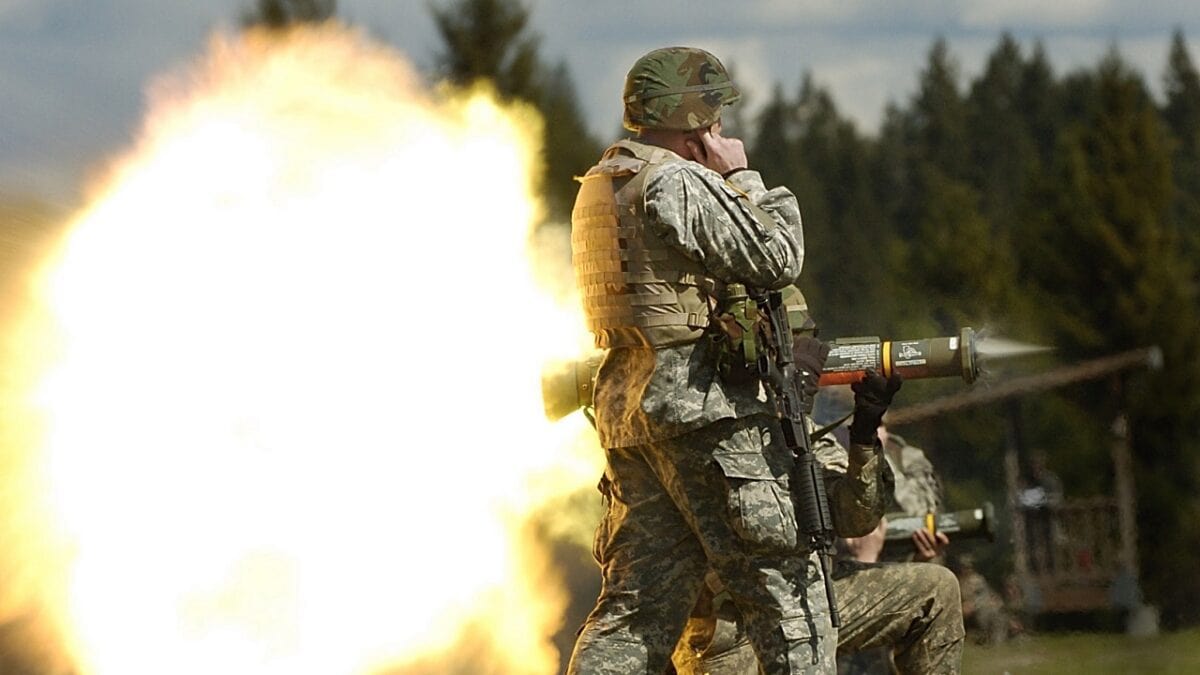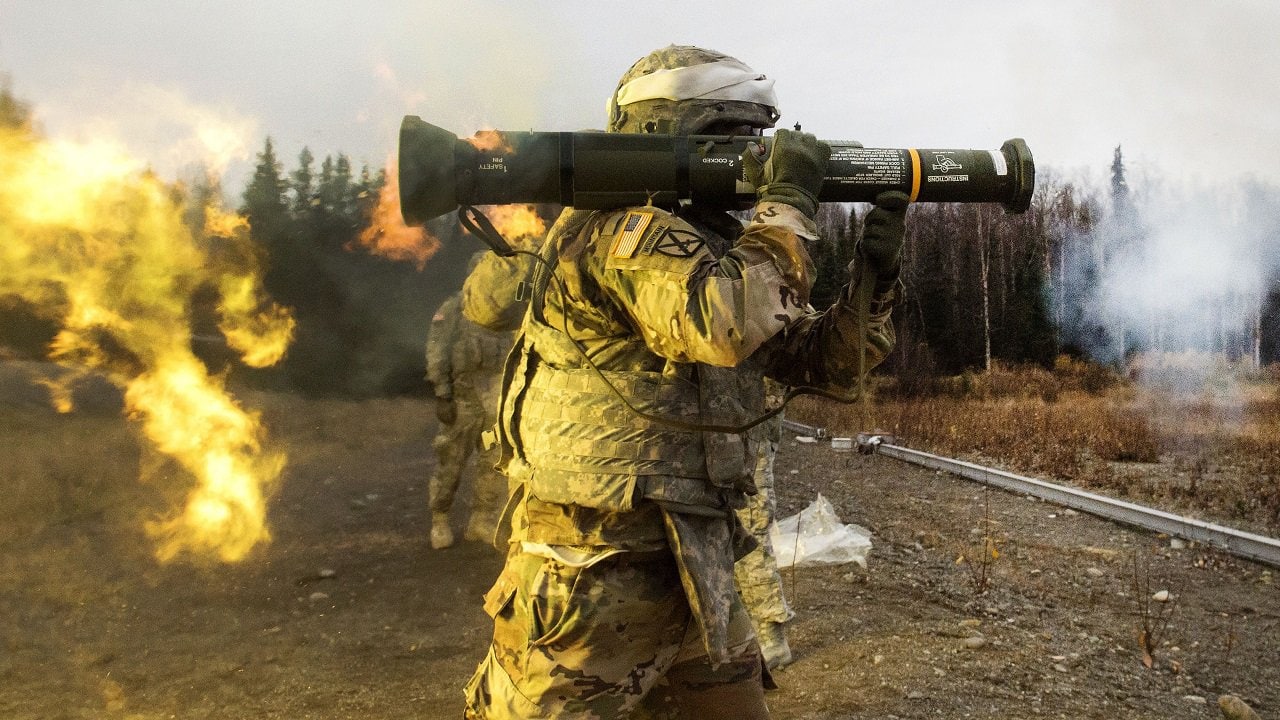Man-portable anti-tank weapons have been crucial in Ukraine’s efforts to hold and even push back Russian forces. More than six months into the fighting, however, the supplies of these shoulder-launched platforms are running low. That is true both in Ukraine and in the countries where the weapons are produced.
As a result, Ukraine may need to rely on more “basic” anti-tank systems, such as the Swedish-made AT4, over the American-produced FGM-148 “Javelin.”
That isn’t to suggest that the AT4 is a bad weapon.
In fact, the single-shot rocket launcher has proven deadly effective against Russian tanks and other armored vehicles. The series of 84mm (3.31-inch) unguided, man-portable, single-shot, disposable, recoilless smoothbore anti-tank weapons were developed by Förenade Fabriksverken (FFV) and manufactured at their facility at Zakrisdal, Karlstad, Sweden.
It can be operated by a single soldier, and depending on the particular rocket model, the AT4 has a range of 200 to 600 meters, and it can penetrate armor up to 460mm. Sweden has already supplied some 15,000 AT4 anti-tank weapons to Ukraine, as part of an aid package announced earlier this year, but it is unclear if more will be sent.
U.S. Stockpiles Low
What is of notable concern is that it isn’t just Ukraine’s stocks that are dwindling. Produced by Saab Bofors Dynamics, the AT4 is one of the most common light anti-tank weapons used by militaries in the world, including the United States – which has also sent a significant number to help the government in Kyiv.
“Lightweight, easy to use, and reliable, the AT4 has a strong record of success in the U.S. Armed Forces,” said Madeline Wild, aerospace, defense & security analyst at international analytics firm GlobalData, in an interview with 19FortyFive.
“The type of variant that the country has ordered adapts the weapon specifically for use in confined spaces (giving the variant the ‘CS’ designation), reducing recoil and making it suitable for urban warfare,” Wild explained to 19FortyFive. “The most recent order is significant due to both the high contract value and the fact that the units are likely replacing the 6,000 units sent to Ukrainian forces in Spring 2022.”
The United States Department of Defense (DoD) will see its stocks replenished, but it is unclear how long that will take – or if the military has enough weapons in its current stockpile.
“The recent order will boost US weapon reserves at a time when the defense industry has been plagued with issues, especially when it comes to replacing similar weapons sent to Ukraine: namely the Javelin and Stinger,” added Wild. “These, however, are both domestically produced and thus subject to the issues relating to workforce depletion and supply chain problems. Unlike them, the AT4 is produced by Saab, a Swedish manufacturer, and as such does not face U.S.-specific, domestic manufacturing problems.”

AT4. Image Credit: Creative Commons.
It is likely the flow of AT4s to Ukraine will continue. It is still proving highly effective against Russian tanks, while it is far less expensive – a factor that is a reality today. The cost of the AT4 is around $1,500, compared to the roughly $176,000 price tag of an FGM-148.
“It is estimated that Javelin’s cost around 100 times more to fire than the AT4,” Wild explained to 19FortyFive. “When comparing the cost of the more highly rated anti-tank weapon to the anti-armor AT4, the choice of which platform can be used for sustained supply to Ukraine is clear. Coupled with the production issues the US is experiencing when it comes to replacing Javelin’s, it is possible that the AT4 will increasingly be seen as the portable anti-armor weapon of choice to send to Ukraine. The effect this may have on the success of the Ukrainian troops is a concern, with the Javelin still lauded for its successes in the conflict so far.”
Expert Biography: A Senior Editor for 1945, Peter Suciu is a Michigan-based writer who has contributed to more than four dozen magazines, newspapers, and websites with over 3,000 published pieces over a twenty-year career in journalism. He regularly writes about military hardware, firearms history, cybersecurity, and international affairs. Peter is also a Contributing Writer for Forbes. You can follow him on Twitter: @PeterSuciu.

